The Occupational Safety and Health Administration fined Tampa Electric $18,108 and gave the company two "serious" citations for its response to a gas leak at the Big Bend Power Station in May, the agency announced late Friday.
The May 23 incident involved a release of anhydrous ammonia at the Apollo Beach plant that sent four workers to the hospital. All were released.
OSHA also issued two "serious" citations and $25,350 in fines to Tampa Electric contractor Critical Intervention Services, a firm that provides security services at Big Bend.
The fines come as Tampa Electric, one of the state’s largest electric utilities, is facing increasing scrutiny over its safety record. OSHA is investigating a June 29 accident at the Big Bend plant that killed five workers and injured a sixth. The agency is expected to issue its findings by the end of December.
An August Tampa Bay Times investigation into the deadly accident found that the company had experienced a near-identical incident two decades ago that injured at least three people. That accident led a committee of workers and managers to draw up new safety guidelines that would have prevented the June incident. But the rules were costly and eventually abandoned, former and current employees told the newspaper.
The Times has also reported that more workers have died in Tampa Electric’s power plants than in plants run by any other Florida utility. Tampa Electric has had 10 fatalities since 1997. No other utility has had more than three.
Tampa Electric spokeswoman Sylvia Vega said the company was reviewing the citations, and planned to meet with OSHA soon.
"Our review of our safety policies and procedures, which is ongoing, includes an evaluation of this equipment," she added.
Anhydrous ammonia is a hazardous gas that can cause skin burns, respiratory irritation and death by suffocation.
It was released at Big Bend by an over-pressurized pipeline, OSHA said. Tampa Electric was cited because its emergency response plan did not meet minimum requirements, and because the employees who were exposed to the gas were not wearing the appropriate protective masks.
Critical Intervention Services was penalized for not having a written hazard communication program and not having trained its employees about possible hazardous chemicals.
"When there is a potential hazardous chemical exposure, the emergency response plan must include all of the minimum safety and health requirements, including appropriate respiratory protection for employees," OSHA Area Director Les Grove said in a statement.
Tampa Electric and Critical Intervention Services have 15 days to contest the findings.
===========================
By NEIL BEDI, JONATHAN CAPRIEL, ANASTASIA DAWSON and KATHLEEN MCGRORY
Times Staff Writers
TAMPA
The blast happened suddenly, with enough force to toss Carlton Nelson across the power plant’s floor.
When he came to, the veteran Tampa Electric mechanic lifted his head and squinted. The tank he had been trying to fix was spewing a deadly substance called slag from an open door, like a volcano gushing lava. Nearby, a forklift was melting in the molten goo.

That was in 1997. After, Tampa Electric wrote special guidelines so another accident like it would never happen again.
Then two decades later, almost to the day, five workers were killed, burned to death performing a near-identical job at the utility’s Big Bend Power Station in June.
If Tampa Electric had followed the guidelines, the men would still be alive.

But a Tampa Bay Times investigation has found that Tampa Electric abandoned those rules and resumed the risky procedure that caused the accident.
The company can’t say when things changed. But it did the job this summer even though its own safety manual appears to prohibit the practice, and after its union complained that type of maintenance violates federal safety rules.
The June accident and the one in 1997 hinged on a critical decision: whether or not to turn off the boiler connected to the tank before starting the work.
Tampa Electric says money wasn’t a factor. But each time a utility turns a boiler off, experts say, it costs hundreds of thousands of dollars.
On June 29, 2017, Tampa Electric decided to leave it on.
■ ■ ■
The day started with a routine problem.
Workers were trying to remove a blockage from a 30-foot-tall tank beneath the power plant’s boiler. The tank catches the molten ash that forms when coal burns — called slag — and cools it into harmless pebbles.
Because Tampa Electric kept the unit running, hot slag was building up overhead while the workers cleaned out the tank below.
The slag was supposed to stay trapped in the boiler. Instead, it poured down on the men.
To understand the accident, Times reporters interviewed 14 current and former Tampa Electric employees, examined the company’s safety manual, reviewed two textbooks on power plant operations and analyzed hundreds of pages of records filed with the state Public Service Commission and the U.S. Energy Information Administration.
Reporters then spoke with 11 power plant experts and operators from across the country, all of whom said working at the bottom of a slag tank with the boiler online is dangerous. Some plants ban the practice, they said.
“Not been done for the 30 years I've been around,” said Chris Cerveny, a station manager at Nebraska Public Power District’s Sheldon Station, which has units with slag tanks and powers parts of Lincoln, Neb.
In an interview with the Times, Tampa Electric CEO Gordon Gillette confirmed the paper’s understanding of the June accident and provided a timeline of the incident. He also acknowledged the procedure’s risk.
Asked if the work was dangerous, he responded: “When you have this potential energy source, would you want to have people down in this area? I don’t know why people would be standing there. But we don’t know what the exact circumstances were.”

CHRIS URSO | Times
Tampa Electric CEO Gordon Gillette describes the June 29 accident that killed five workers at Big Bend Power Station.
Gillette, who joined Tampa Electric in 1981, said he knew of the 1997 accident and the 2015 grievance.
In the case of the grievance, he said, “we assured ourselves we weren’t the only ones in the industry doing online slag tank maintenance, and we got ourselves comfortable with operating that way.”
The company, he added, is reevaluating that stance.
Gillette said the boiler was running on June 29 because Tampa Electric had done similar work “hundreds of times” before and believed it was safe.
But Nelson, now retired and living in Tampa, was stunned to hear the procedure that injured him had been done again.
He wondered: “Did they forget that I almost died?”


NEIL BEDI | Times
Former Tampa Electric employee Carlton Nelson survived a 1997 accident that was near-identical to the one that killed five workers in June.
A clog in the tank
The Big Bend Power Station in Apollo Beach is home to the oldest coal-fired units in Tampa Electric’s fleet.
Each unit has a boiler as tall as a 12-story building, where coal is burned to create steam. The steam spins large turbines and generates energy.
The units at Big Bend are unique in how they handle ash. Most newer units catch ash airborne in the boiler. But three of Big Bend’s four coal boilers are models from the ’70s that melt the ash into slag, which reaches temperatures of more than 1,000 degrees.
The slag collects at the bottom of the boiler and then drops through a man-sized hole into one of two tanks below.
Water in the tank cools the slag and causes microscopic explosions that turn it into hard glassy rock. A grinder at the tank’s bottom breaks the hardened slag into tiny chips that can be sold to roofing and sandblasting companies.
Sometimes, the man-sized hole becomes plugged with hardened slag, trapping new hot slag in the boiler above. The plug can melt on its own, or workers can remove it with a water blaster or a metal stick called a lance.
Blockages known as boulders can also form at the tank’s bottom, obstructing the grinder.
Both of those things happened to Big Bend’s Unit 2 on June 29.
Early that morning, plant operators realized Slag Tank A was starting to clog. Later, they noticed a boulder at the bottom of the tank.
Tampa Electric needed it unblocked to keep the boiler generating power. Tank B was having problems and had been out of service. Without a working tank, the company would have to shut the boiler down.
A team tried draining Tank A several times in the early afternoon, hoping the rush of water would cause the boulder to tumble out, according to Tampa Electric’s account of the day. They failed.
At that point, Tampa Electric could have turned off the boiler to safely remove the boulder. Instead, it decided to try one last procedure with the unit on.
Gillette said there were concerns that powering down the unit would cause molten slag to harden in the boiler. The company, he added, would have had to remove it with dynamite.
But using dynamite to clean slag out of a boiler is common. It would have been far safer than what happened next, according to experts.
Around 4 p.m., senior plant operator Michael McCort, 60, met three workers from Gaffin Industrial Services, a Riverview contractor that specializes in industrial water-blasting: Christopher Irvin, 40; Frank Lee Jones, 55; and Jones’ stepson, Gary Marine Jr., 32.
Two workers from general contractor BRACE Industrial Group arrived to clean up: Antonio Navarrete, 21, and Amando J. Perez, 56.
The team opened the door closest to the ground, known as the “doghouse door.” A thick protective gate inside the tank was also open.
Their plan was to break up the boulder with water blasters, and close the door as quickly as possible.
They were counting on the connection between the boiler and the tank to remain clogged.
The hardened slag was the only thing separating them from the hot slag in the boiler.
Tampa Electric officials still don’t know how the plug blew, or why, Gillette told the Times. Both the company and the federal Occupational Safety and Health Administration are investigating.
But about 20 minutes into the job, thousands of gallons of slag gushed from the boiler, shooting out of the tank through the doghouse door and covering the workers. It formed a pool six inches deep and 40 feet wide.
Neighbors said they heard the boom miles away.
Navarrete called his mother. The call went to voicemail.
“Mom, help me,” he begged, steam hissing in the background. “Mom, I’m burning.”
McCort and Irvin died at the scene.
Navarrete died July 5. Jones July 8. Perez July 20.
Only Marine survived.

Michael McCort, 60

Christopher Irvin, 40

Antonio Navarrete, 21

Frank Lee Jones, 55

Amando J. Perez, 56

Gary Marine Jr., 32
‘Too much risk’
Tampa Electric officials said they had done similar work hundreds of times, including six maintenance jobs on slag tanks this year.
But experts told the Times the June 29 procedure — removing a blockage from the bottom of a slag tank while the boiler is running — is always risky.
Randy Barnett, a program manager at industrial training company National Technology Transfer Inc., who worked in coal-fired power plants for decades, called the practice “obviously unsafe” because it exposes workers to a trio of hazards: slag, high temperatures and extreme pressure.
Said Charlie Breeding, a retired engineer who worked for Clyde Bergemann Power Group, which makes boiler ash handling systems: “It does not take a genius to figure out that it is dangerous.
 Common sense tells you that when you’re dealing with molten ash well above 1,000 degrees in temperature, it’s dangerous.”
Common sense tells you that when you’re dealing with molten ash well above 1,000 degrees in temperature, it’s dangerous.” There is no guarantee the slag building up in the boiler will stay there.
Even the smallest change in conditions inside the boiler — a slightly different composition of coal feeding its fire, for example — can cause a plug to melt, sending the molten lava rushing into the tank below.
“All of a sudden, you’ve opened up the hole,” said George Galanes, who spent decades working in power plants in Illinois before becoming a consultant for Diamond Technical Services.
Galanes said the plants he worked at would never do that. “Too much risk,” he said.
Slag tanks are increasingly rare. Only about 30 of the nation’s roughly 800 main electric utilities still used the technology in 2015, according to the Energy Information Administration. Big Bend’s units are the only ones left in Florida, agency records show.
Managers at four plants with slag tanks, including Cerveny in Nebraska, told the Times they don’t let workers perform maintenance at the bottom of a slag tank with the boiler online.
“I can’t imagine us as a company sending anyone in,”
 said Brian Eddins, a manager at the Entergy White Bluff power plant 24 miles south of Little Rock, Ark.
said Brian Eddins, a manager at the Entergy White Bluff power plant 24 miles south of Little Rock, Ark. “If the boiler is on, we keep the doghouse door closed up,” said John Davis, the electric division manager for City Water, Light and Power in Springfield, Illinois.
Even Tampa Electric’s safety manual seems to prohibit working on slag tanks while the boiler is running. It requires the slag tank hole to be covered “before work is performed in the slag tank.” Several former employees told the Times that can’t be done unless the boiler is off. Otherwise, the cover would melt. Gillette said the company is investigating whether the policy was broken.
Even though every expert agreed the procedure was risky, several acknowledged it is sometimes done. Scott Ray, whose firm Premier Safety Partners develops safety management programs for businesses in the energy sector, said it comes down to each organization’s culture.
“Some employers will shut everything down in order to do a job safely,” Ray said. “Other companies may look at it from a different perspective. They may accept more risk.”

LUIS SANTANA | Times
Big Bend Power Plant in Apollo Beach has many of Tampa Electric’s oldest power units.
A costly procedure
Tampa Electric had a strong incentive not to turn the boiler off, experts say. Shutting down and restarting a boiler can cost utilities up to a quarter-million dollars.
Much of the expense is in powering the unit back up. Plant operators must burn more fuel than normal to heat the boiler to the right temperature. The process takes 12 hours for Big Bend’s coal boilers, federal records show.
For utilities, “it is a big deal,” said Mort Webster, an associate professor of energy engineering at Pennsylvania State University. “So they try not to do it.”
What’s more, if the company can’t meet demand with the boiler off, it must purchase electricity from another utility, usually at a higher price.
Tampa Electric needed as much power as possible June 29.

Across the Tampa Bay region, air conditioners were cranking in the 95-degree heat. And with the Independence Day holiday approaching, more people were likely to be home. Tampa Electric had seen the highest demand ever for power in the summer on July 5 the year before.
Three of the four coal units at Big Bend were already having problems, performance records filed with PSC show. One had a leak and had been offline for two days. The others weren’t running at full capacity.
In June, Unit 2 provided 17 percent of Tampa Electric’s overall power, compared to about 8 percent in the two-year period before that, according to the records.
Gillette said powering down Unit 2’s boiler would not have hurt the company’s bottom line. He pointed out that the PSC allows Tampa Electric and other utilities to pass along the cost of firing up the boiler and buying power to their customers.
But J.R. Kelly, who represents consumer interests before the PSC, said the reimbursement process takes months and utilities aren’t guaranteed to be approved.
If rates get “too high,” it can also hurt a company’s public image with consumers and politicians, making it more difficult to get money down the road, said Roger Conrad, a utility analyst who operates the website Conrad’s Utility Investor.
“You’ve got to keep your costs in line,” he said. “That’s how you avoid some sort of rate armageddon where the state politicians move against you, and you become a whipping boy for politicians.”
Tampa Electric’s rates are among the lowest in the state.
‘Playing with fire’
The 1997 accident at Tampa Electric’s Gannon Power Station, now a natural gas plant called H.L Culbreath Bayside Power Station, caused a furor among the workforce, former employees said.
At least three workers were hospitalized. Nelson was treated for second-degree burns on his arms. Another employee, Roy Adams, was burned in the face, but declined to discuss what happened with a reporter. Eugene Martinez said he suffered carbon monoxide poisoning.

University of South Florida Libraries
A Tampa Tribune story describing the 1997 accident.
“We had told them as a group numerous times that that was wrong, that they were playing with fire,” Martinez said.

The union business manager, R. Floyd Suggs, wrote a memo to Tampa Electric’s safety director that has been obtained by the Times. “This incident is one of several growing toward a major accident,” Suggs wrote. “We need you to make sure that our environment is the safest possible.”
Later that summer, Tampa Electric convened more than a dozen employees and managers to create new safety guidelines for performing slag tank maintenance. After several meetings, the group agreed on a list of conditions that had to be met in order to do the job with the boiler on, said Rick Coronado, a retired plant mechanic and union leader who served on the committee with Nelson.
Under many circumstances, they decided, the boiler had to be shut down.
The guidelines were particularly strict for workers assigned to remove a blockage from the bottom of a slag tank. In those cases, Nelson said, if a worker needed to open the lower door to work, “the units were supposed to come off line, regardless of how much it cost.”
Tampa Electric followed the guidelines for at least a decade, four current and former employees said. Nelson, who became a supervisor at Big Bend, said the company was still avoiding most work with the boiler running when he retired in 2009.
But the years that followed saw a sharp shift in how Tampa Electric operated, as it reshaped itself in the wake of the recession, state records show.
The company laid off about 200 employees, or 8 percent of its workforce, in 2009. It also began deferring or eliminating some “lower priority work,” including “major equipment inspections” and preventative maintenance to save money, Director of Engineering and Project Management Mark Hornick told the PSC in written testimony in 2013.
Hundreds of layoffs
Since 2007, Tampa Electric has cut its workforce by about 8 percent two separate times.
1,8002,0502,3002,5502,800’07’08’09’10’11’12’13’14’15’16NEIL BEDI | TimesData: Florida Public Service Commission
Hornick acknowledged the practice was already causing some equipment to falter.
“If this continues, unforeseen problems may develop, resulting in more costly corrective maintenance from forced or unplanned outages,” he wrote.
The company successfully petitioned the PSC for a rate hike in 2014 and restored parts of its maintenance budget, records show.
Neither Gillette nor the employees interviewed by the Times could say with certainty when Tampa Electric started doing slag-tank maintenence with the boiler online again.
But this time, contractors were doing much of the work, union business manager Doug Bowden said, both to save money and because the union raised safety concerns.
“They said, ‘Hey union, if you don’t want to do that work, we’ll hire it out,’ ” he said.
Tampa Electric denied that it transferred work away from employees because of safety concerns. The company has contracted with Gaffin for years, it said.
Gaffin and BRACE, the other contracting company involved in the June accident, declined to comment.
In 2015, the union filed a formal complaint alleging members had been asked to work on a slag tank while the boiler was running. It grew into a series of complaints about slag tank maintenance, Gillette acknowledged. But the company didn’t back down from ordering the work.
Bowden followed up with OSHA in September of 2016. He was told the agency could not investigate because the alleged violation had occurred more than six months prior, he said.
The union did not request arbitration.
Meanwhile, profits rose, despite erratic revenues, state records show.
Last year, Halifax-based Emera Inc. acquired Tampa Electric’s parent company for $10.4 billion. Shortly after, Tampa Electric’s profits reached a record $250 million.
In a statement, Tampa Electric attributed the profits to a recent rate hike, favorable weather and customer growth.
Unsteady revenues, but profits soar
Tampa Electric’s revenue barely grew since 2006. But during that period, profits rose by more than $100 million.
Revenue1,7001,9002,1002,300$2,500 million’06’08’10’12’14’16NEIL BEDI | Times Profit100145190235$280 million’06’08’10’12’14’16Data: Florida Public Service Commission

LOREN ELLIOT | Times (2015)
Former TECO Energy Inc. CEO John Ramil and Emera CEO Chris Huskilson announce Emera had acquired Tampa Electric’s parent company in 2015.
A promise and a plea
In the weeks since the June 29 accident, Tampa Electric has started a “top-to-bottom” review of its safety protocol, Gillette said. The company held a series of meetings with employees last month.
“What we have to do, some way, is learn from this and make sure it never happens again,” Gillette said.
There are no immediate plans to retire the units with slag tanks, the company says.
But no worker will clean out a slag tank with the boiler running until the company and OSHA finish investigating. “We’re not going to do it until we understand what happened,” Gillette said.
The union isn’t satisfied.
“This is a start,” Bowden said in a statement. “But we must ensure that no employee, either company or contractor, is ever directed to or allowed to work on a slag tank when there is a potential that they can be injured.”
Union leaders filed a formal grievance on the issue last month.
Coronado, the retired plant mechanic, said it shouldn’t have come down to this.
“They should have turned the boiler off,” he said.
No matter what changes come from the accident, Hilda Ramirez said it will never ease the pain of losing her little brother, Antonio Navarrete.
Ramirez and her wife, Delfina, spent the weeks since the accident trying to piece together what happened, with little information from Tampa Electric. When a Times reporter told them the details, Hilda Ramirez, 28, wept quietly.
“This whole time we’ve just wanted an explanation for his death, and now we know the truth,” Delfina Ramirez said. “They knew what could happen. They could have prevented his death.”













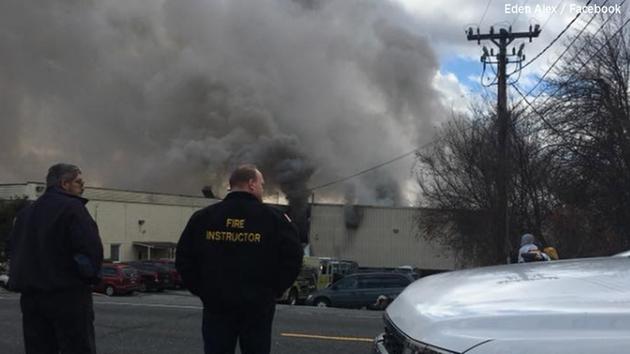
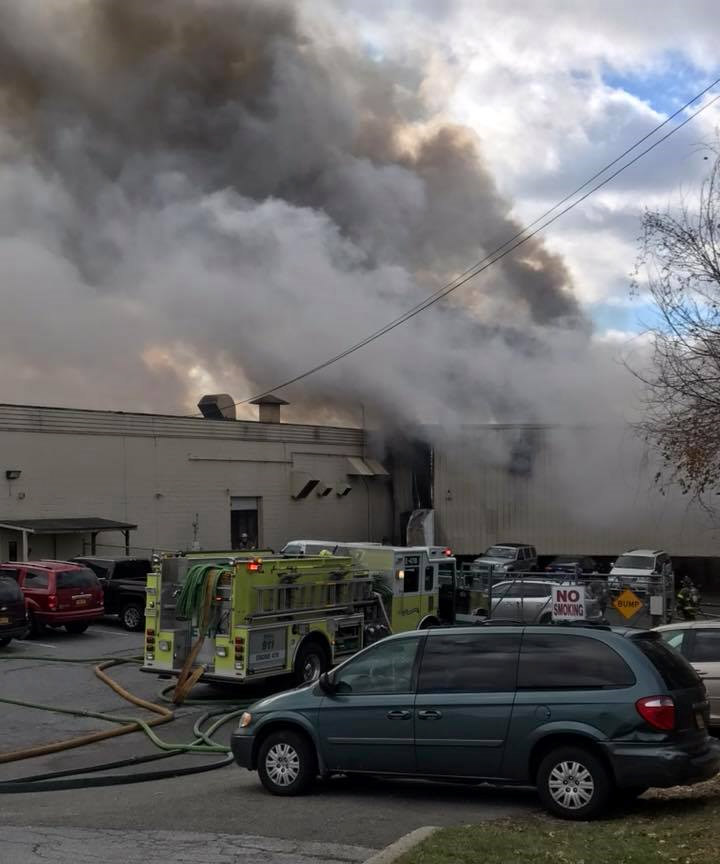

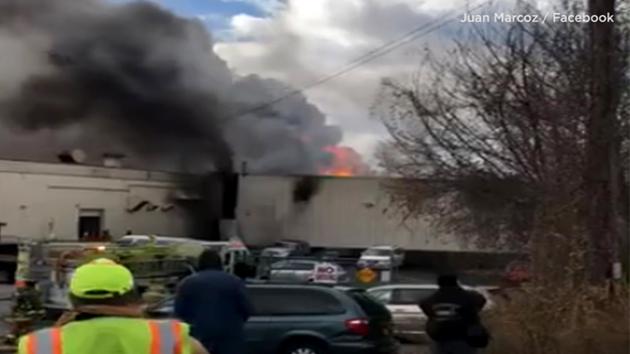
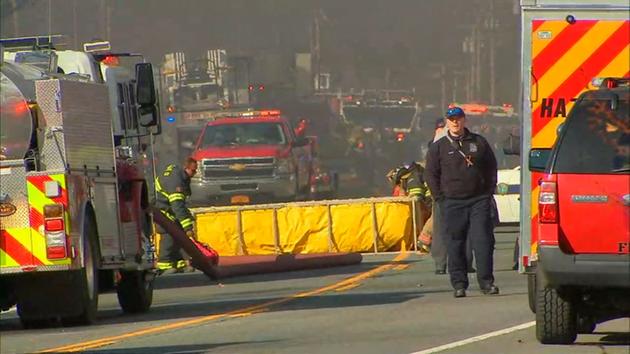
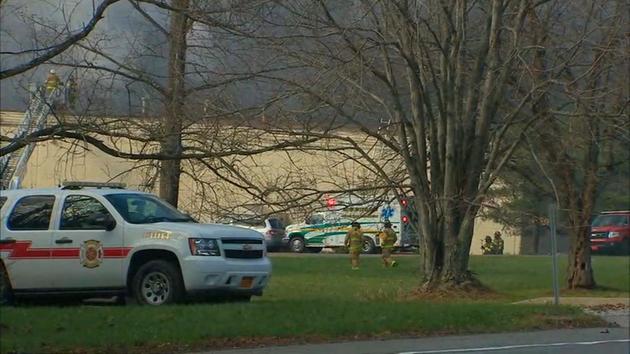
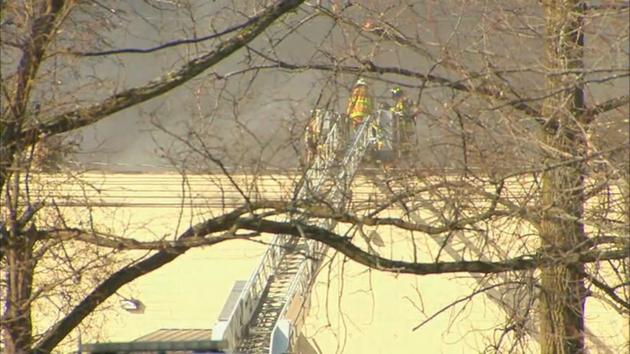
 Dramatic Images: Explosions Rock NY Cosmetics Plant
Dramatic Images: Explosions Rock NY Cosmetics Plant






